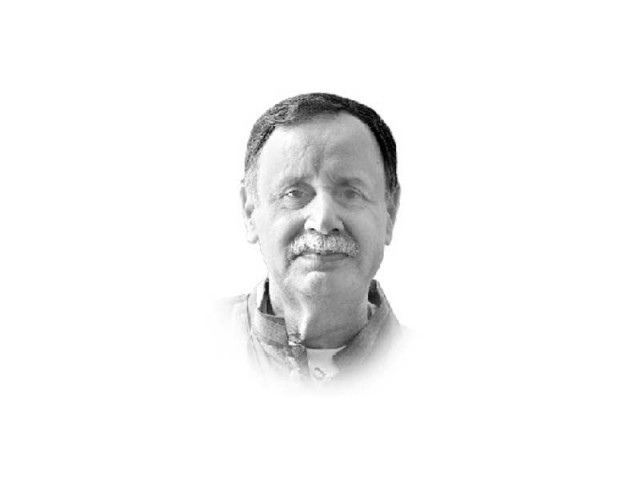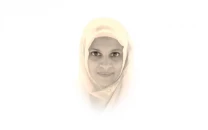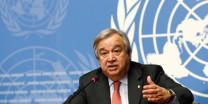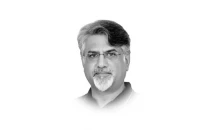Sewage Sans Frontières
.

Incorporated into the outer walls of houses, constructed with bricks, linked to drainage systems and covered with wooden seats. Such were the toilets of Mohenjo-Daro in the third millennium BC. In 2025, Pakistan barely treats 1% of its raw sewage, letting the remaining 99% pour into land, rivers, canals, lakes and sea. The file relating to SDG 6, which included our pledge for treating up to 50% of untreated sewage by 2030, was misplaced by the 'Naib Qasid' and has been missing since then.
In 2024, we proudly led the world in polio cases — outpacing our closest competitor Afghanistan by a factor of three — and have maintained that dubious lead well into 2025. Since 2014, Pakistan happily swallowed $1.2 billion in polio aid, much to the delight of those who prefer 'polio drops' over addressing the root causes of disease. It is therefore surprising that Pakistan makes no attempt to understand or to disrupt the faecal-oral link between contaminated water and polio.
Cynics often admire the masterstroke of our policymaking — that enables 150,000 elite club members to cruise in Toyota Fortuners, while the 250 million ordinary citizens soak in their own raw sewage. They describe with remarkable 'objectivity' that our national passion for sinking in sewage brings countless hidden benefits. Take, for instance, Karachi's very own water and sewage management organisation, the KWSC, for whom this visionary 'Sewage Sans Frontières' (SSF) policy is a blessing in disguise.
The SSF policy provides a justification to KWSC to receive about Rs40 billion per year and maintain a large inventory of real and virtual employees. SSF helps the KWSC to successfully keep postponing the completion date (from 2007 to 2027) and increasing the bill (from Rs7 billion to Rs27 billion) for the Greater Karachi Sewerage Plan (S-III). Cynics claim that KWSC has no real intention to ever complete the project. Anyone who knows simple arithmetic can appreciate that KWSC is having a blast at the taxpayers' expense, by treating merely 30 MGD out of the 500 MGD of raw sewage generously donated by the citizens of Karachi every day. Of the 4 Sewage Treatment Plants (STPs), 3 add no value and one reluctantly operates at a third of its capacity.
With overall 1% sewage treatment, it may be safe to conclude that the sewage treatment plants in Karachi, Islamabad, Lahore and Faisalabad oscillate between idleness, dysfunctionality, encroachments, stolen machinery, ghost staff, lack of maintenance and misgovernance. Why is Pakistan not interested in treating its sewage using low-cost, nature-based, indigenously "Constructed Wetlands" or CWs? Even developed cities like Oslo, Brisbane, New York, Singapore, Bangkok and Berlin treat a part of their sewage by using CWs.
CWs are environment-friendly, simple to build, easy to maintain, involve little capital, few operators and use negligible energy. The treated water is not sent to water bodies but stored and reused for plantation, parks and industrial applications. A typical CW consists of a shallow basin or channel, filled with a substrate such as gravel, sand or stones, and planted with wetland vegetation like reeds and canna.
A 2-stage sedimentation/pretreatment tank helps settling of heavier solids, before the water enters the main CW. Water flows slowly through the system allowing microbial activity, breaking down organic pollutants and filtration to remove contaminants such as suspended solids, organic matter, nutrients and pathogens. Malir and Lyari riverbeds are ideal to accommodate scores of CWs, each creating a lake for storage of treated water, recreational areas, opportunity for planting trees and suitable environment for birds, frogs, dragonflies, butterflies and bees.
This entire transformation could be achieved at less than one-tenth of the current STPs' cost and replicated across every town and village in Pakistan. Within just 2-3 years, Pakistan not only could meet but surpass its 2030 SDG for sewage treatment. Additionally, if our "KWSCs" were to ensure a minimum 10-foot horizontal separation between water and sewer lines and where lines must cross, the water line is at least 1.5 feet above the sewer line, Pakistan could have licked its polio problem for good.



















COMMENTS
Comments are moderated and generally will be posted if they are on-topic and not abusive.
For more information, please see our Comments FAQ